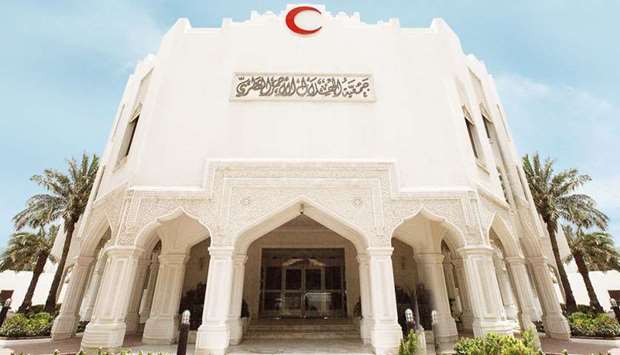Qatar Red Crescent Society (QRCS) has said it is developing an emergency response plan to deal with a potential mass displacement movement in the northern parts of Syria.
In a report issued in August on the humanitarian impact of any military escalation, the United Nations (UN) estimates that around 900,000 civilians would be displaced in the next six months, including 700,000 in Idlib alone.
Developed by QRCS’ representative mission in Turkey, the plan involves a set of relief and medical interventions guided by the overall relief plan adopted by UN agencies and other humanitarian providers in Syria.
Under the scheme, QRCS will secure makeshift shelter materials, pay for housing rentals in safe areas for three months, install more tents at existing shelter camps, and establish new camps in co-ordination with the UN Camp Co-ordination and Camp Management (CCCM) Cluster.
A temporary reception centre will be created to serve up to 2,400 internally displaced people (IDPs) per day with shelter, protection, water and sanitation, food and nonfood aid, and medical care.
In addition, an emergency catering hub will be opened to prepare and distribute daily meals and bread bundles at IDP congregation areas.
QRCS will also support health facilities, which offer emergency services and provide primary health care, particularly in maternal and child health, first aid, and referrals to reduce morbidity and mortality rates.
A field hospital will be operated to treat the patients at shelter centres, IDP congregations, and areas of military action. Three mobile medical clinics will be deployed to offer treatment and medication free of charge.
QRCS noted that ambulance vehicles and health facilities in target areas will be supplied with medical equipment and medicines to meet an increasing demand.
QRCS’ mission in Turkey will be working closely with the UN Office for the Co-ordination of Humanitarian Affairs (OCHA), as well as other non-governmental organisations such as the Turkish Red Crescent and the Disaster and Emergency Management Presidency of Turkey.
Since November 2017, the military operations in southern Idlib and northern Hama countryside have caused a huge influx of people to neighboring towns, making extra pressure on the already overpopulated and underserved region.
According to OCHA's latest demographic statistics in May, nearly 3mn people have been dispersed across Idlib, western Aleppo, northern Hama, and eastern Latakia.
Idlib received almost 1.4mn newcomers from Eastern Ghouta, Homs, Hama, Daraa, and Aleppo, let alone the governorate’s 1.6mn population.
“Recent weeks have seen a further serious deterioration of the humanitarian situation in the north-west, with intense aerial bombardment and shelling reported in parts of Idlib, Aleppo, Hama, and Latakia governorates,” said OCHA’s operations and advocacy director John Ging in a briefing to the Security Council on the humanitarian situation in Syria.
In a statement, he warned against a worst-case scenario in Idlib, currently home of millions of local community and IDPs who live in terrible conditions.



